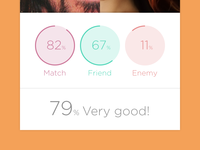sacramento live escort review
CREATE TABLEwill develop a new, initially empty table within the database that is current. The table will be owned by an individual issuing the demand.
In cases where a schema name is offered (for instance, CREATE TABLE myschema.mytable .) then table is established within the specified schema. Otherwise its created in the present schema. Temporary tables exist in a special schema, therefore a schema title can not be offered when designing a short-term dining table. The name associated with dining table must certanly be distinct from the title of virtually any table, sequence, index, view, or international dining table in the schema that is same.
CREATE TABLEalso automatically escort Sacramento creates a information type that represents the composite kind corresponding to 1 row of the dining table. Consequently, tables cannot have the same name as any existing data key in the schema that is same.
The constraint that is optional specify constraints (tests) that new or up-to-date rows must satisfy for the insert or up-date operation to succeed. A constraint can be an object that is SQL assists define the set of legitimate values within the dining table in various methods.
There are two main approaches to define constraints dining table constraints and line constraints. a column constraint is described as part of a column definition. a table constraint meaning is not linked with a column that is particular and it will encompass multiple line. Every column constraint can be written being a table constraint; a line constraint is only a convenience that is notational use as s n as the constraint just affects one column.
Parameters

If specified, the dining table is established being a short-term dining table. Temporary tables are immediately fallen by the end of a session, or optionally by the end regarding the present transaction (see ON COMMITbelow). Existing permanent tables utilizing the name that is same maybe not noticeable to the existing session while the temporary dining table exists, unless they truly are referenced with schema-qualified names. Any indexes created on a table that is temporary immediately temporary also.
The autovacuum daemon cannot access and vacuum that is therefore cannot evaluate temporary tables. That is why, appropriate vacuum and determine operations must be performed via session SQL commands. For example, if your table that is temporary likely to be used in complex questions, it is wise to run ANALYZEon the temporary table after it really is populated.
Optionally, GLOBALor LOCALcan be written before TEMPORARYor TEMP. This will make no difference in PostgreSQL , but see Compatibility.
If specified, the table is made being an table that is unlogged. Information written to unlogged tables isn’t written to your write-ahead log (see Chapter 29), making them significantly faster than ordinary tables. Nonetheless, they’re not crash-safe an unlogged table is automatically truncated after a crash or shutdown that is unclean. The articles of an table that is unlogged additionally perhaps not replicated to standby servers. Any indexes produced on an unlogged dining table are automatically unlogged as well; nonetheless, unlogged GiST indexes are maybe not supported and may not be created for an table that is unlogged.
Do not put an error if a relation utilizing the name that is same exists. A notice is given in cases like this. Remember that there’s absolutely no guarantee that the existing relation is anything like the one which might have been developed.
The name (optionally schema-qualified) of the table become developed.
Produces a typed dining table, which takes its framework from the specified composite kind (name optionally schema-qualified). a table that is typed associated with its type; including the table will be dropped in the event that type is fallen (with DROP TYPE . CASCADE).
When a table that is typed developed, then the information types associated with columns are determined by the underlying composite kind and they are maybe not specified by the CREATE TABLEcommand. However the CREATE TABLEcommand can truly add defaults and constraints to your dining table and can specify storage parameters.
The title of the line to be created into the new table.
The info sort of the line. This might include array specifiers. To learn more about the data types supported by PostgreSQL , refer to Chapter 8.
The COLLATEclause assigns a collation to your line (which must be of a collatable information type). If you don’t specified, the line information type’s default collation is used.
The INHERITSclause that is optional a range of tables from which the brand new dining table automatically inherits all columns.
Use of INHERITScreates a persistent relationship between this new youngster table and its own parent table(s). Schema customizations to the parent( s) propagate to children normally because well, and also by default the data for the kid dining table is r fed in scans associated with the parent(s).
In the event that exact same column title exists in more than one moms and dad dining table, an error is reported unless the information types for the columns match in each of the parent tables. If there is no conflict, then a duplicate columns are merged to make an individual line within the new dining table. If the column title range of the brand new dining table contains a line title that can also be inherited, the info kind must likewise match the inherited column(s), therefore the column definitions are merged into one. If the brand new table clearly specifies a default value for the column, this standard overrides any defaults from inherited declarations of the column. Otherwise, any moms and dads that specify default values for the column must all specify the default that is same or a mistake is going to be reported.



